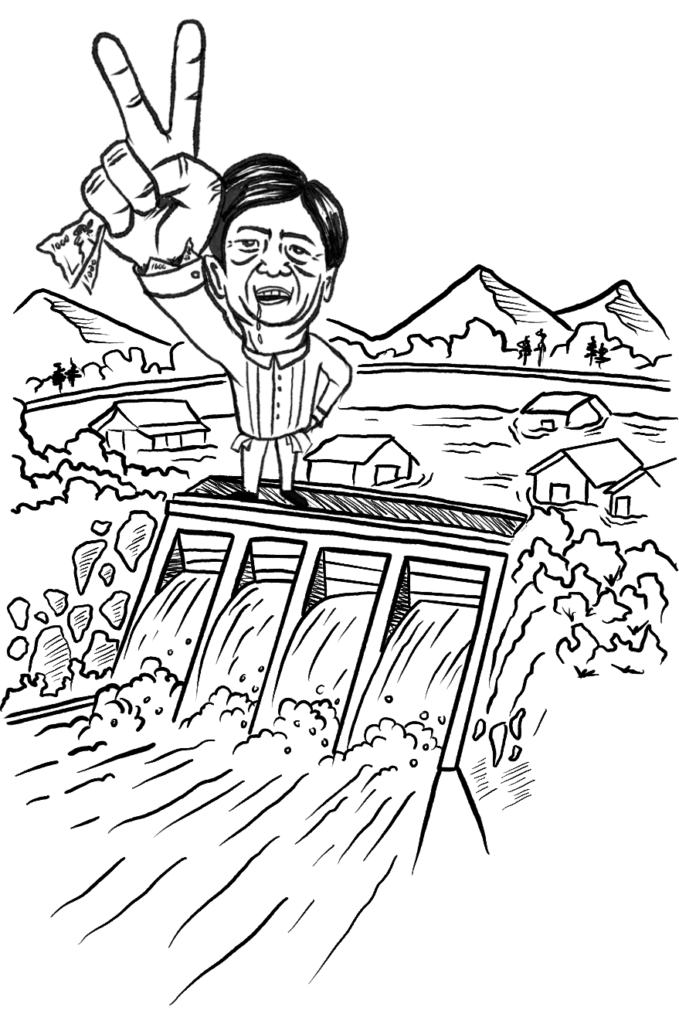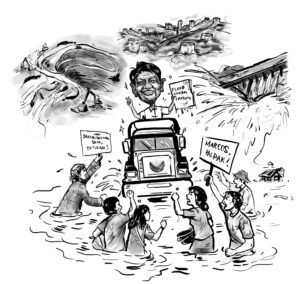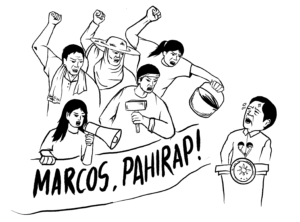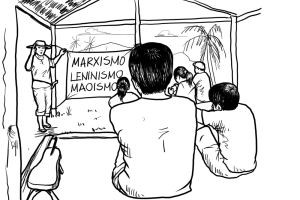Dam projects in Kalinga, to bring devastation and flooding


With the onset of rains, the people of Northern and Central Luzon are again gripped by mounting fears over the devastation and flooding that will come with the Marcos regime’s planned dam construction in the Cordillera. More than 100 hydropower dam business projects are to be built in the region, with at least 20 on major Kalinga rivers.
Rivers and creeks in Kalinga serve as sources of drinking water and irrigation. Major products here are rice, corn, coffee, bananas and various types of beans.
The main river in the province is the Chico River which originates in the Mountain Province and runs for 175 kilometers before joining the Cagayan River. Instead of protecting these water resources, and developing them to increase production and the needs of the people, the Marcos regime is auctioning them off to foreign and local capitalists. On the pretext of promoting “renewable energy,” the Marcos regime is pushing hydropower dams as a source of electricity.
The Cordillera is considered to have the greatest potential for hydropower. Marcos and his cronies drool over the funds that imperialist countries will pour into the construction of dams in the name of “mitigating the climate crisis.” He awarded full privileges to companies, including tax exemptions and other incentives.
Included in efforts to attract foreigners, approval of applications are being expedited and facilitated. Government agencies are being used to deceive, divide and coerce national minority groups to support these projects. The AFP is also assigned to protect the projects and suppress opposition against them.
The largest of the projects is the Chico River Hydropower Project which is expected to have a total capacity of 150 megawatts. It is led by San Lorenzo Ruiz Piat Energy and Water, Inc.
Extensive damage
These projects bring nothing but widespread destruction to the indigenous people of Kalinga and Cordillera, and people of adjacent regions. Many trees will be uprooted for the construction of the dams, and the land will be polluted and destroyed. Companies will appropriate minerals extracted from the land.
Some communities will be flooded, while others will be deprived of access to water. Communities downstream of the dam will experience flash flood. This is the experience in Cagayan Valley when typhoon Ulysses struck in November 2020. Sixty towns and cities were submerged after the Magat Dam had to be opened due to overflowing rivers, affecting more than 300,000 citizens.
Meanwhile, communities upstream will experience siltation or shallowing of the river, caused by the accumulation of soil and changes in the flow of water.
Regardless of the design, the dam will reduce people’s access to free water for irrigation and household use. The companies assure people that only “small dams” will be constructed, but if built in a series in the same river, the effect will be the same as a single big dam, according to the Cordillera People’s Democratic Front (CPDF)-Kalinga.
The flow and depth of the water will also affect the flora and fauna that thrive in and around the water system. They can be washed away by rising waters or by the river’s heavy flow of water into the tunnels. Wildlife along the side of the river may also die if the water rises and the silt increases.
Amid all these, the CPDF-Kalinga calls for the broadest unity among the people in the Cordillera to collectively defend their land and resources. Forms of unity that should be used include progressive and revolutionary bodongs (tribal peace pacts), the establishment of the Cordillera People’s Revolutionary Autonomous Government (CPRAG) and CPDF chapters.
They also call for unity with the people in other regions of the Philippines and in other countries who resist the seizure of their land and resources by capitalist companies.
Adopted from the CPDF-Kalinga primer, May 2024.













